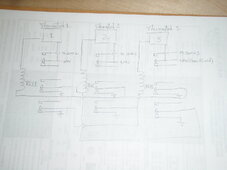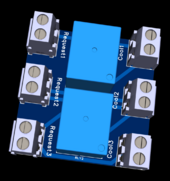Look at the diagram again.
Two can run at the same time.
If any two are running the third will not start.
If two are running and third calls for action nothing happens until one of the others stops.
Eg, If the livingroom and the kitchen are both running and the bedroom gets warm the bedroom thermostat will call for cold air but the relay for the bedroom compressor will not start. The bedroom thermostat will continue to call for air but it's dumb, it won't fault or throw a code if it doesn't get it, it will just keep calling for it. When one of the others stops, let's say the kitchen, then the bedroom will turn on.
This is a whole series of relays, small 5VDC ones in the thermostats will activate the 24V three pole relays which control the contactor relays in the air conditioner that control the 240VAC to the compressor. No overlap and no need for delays or fancy logic.
Sometimes the best answer is the simplest, this requires no software, no CPU, no programming.






